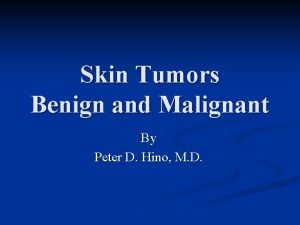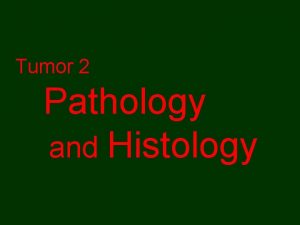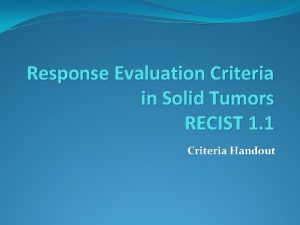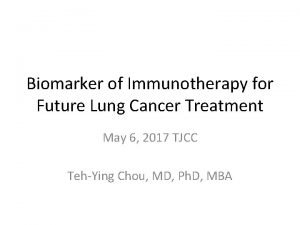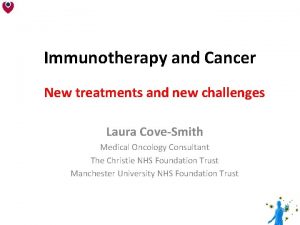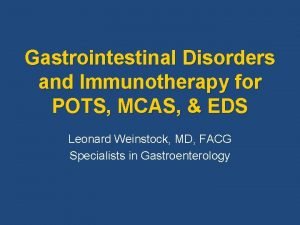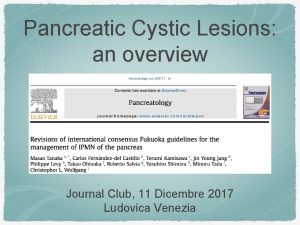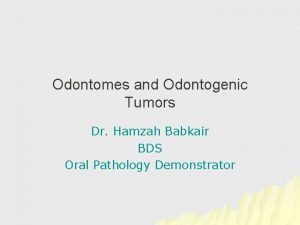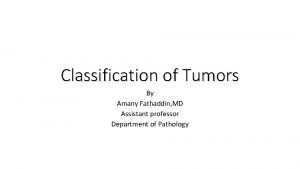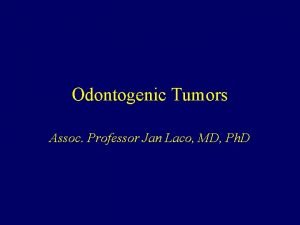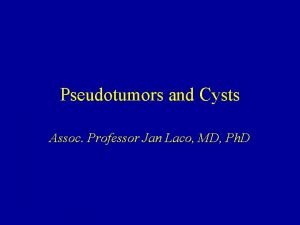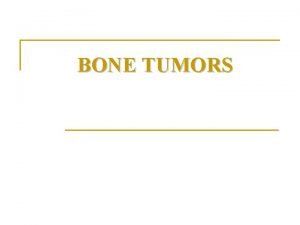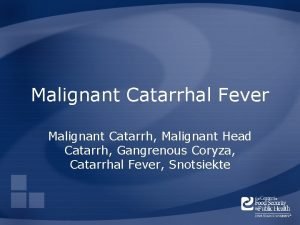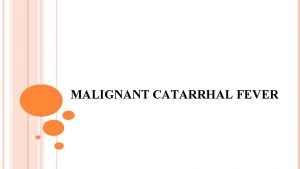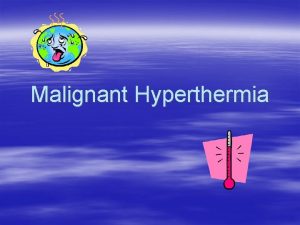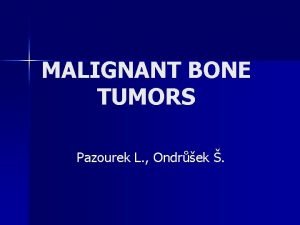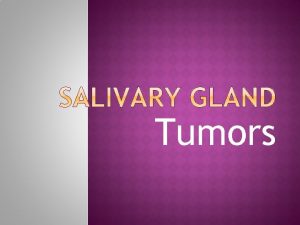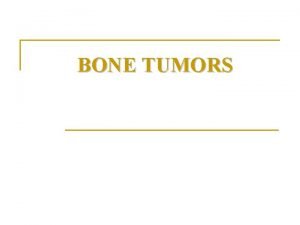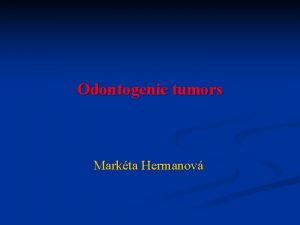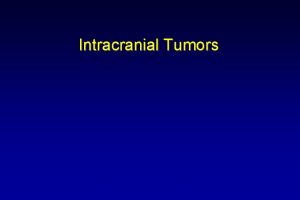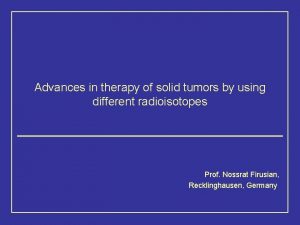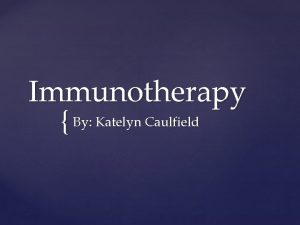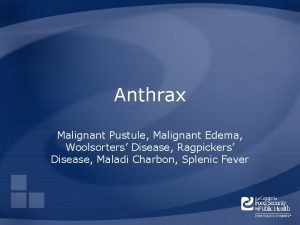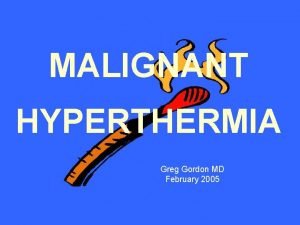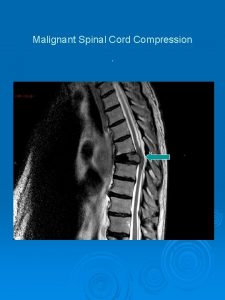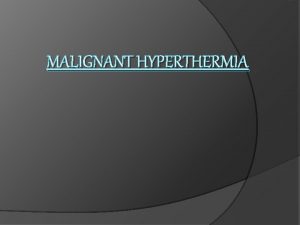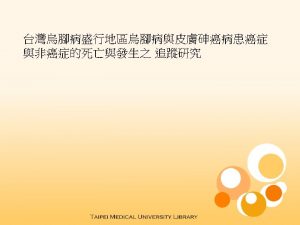Advances in the Immunotherapy of Solid Tumors Malignant


















- Slides: 18

Advances in the Immunotherapy of Solid Tumors Malignant Melanoma (8 minutes) Antoni Ribas, M. D. , Ph. D. Professor of Medicine Professor of Surgery Professor of Molecular and Medical Pharmacology Director, Tumor Immunology Program, Jonsson Comprehensive Cancer Center (JCCC) University of California Los Angeles (UCLA) Chair, Melanoma Committee at SWOG

Ipilimumab (anti-CTLA 4) in melanoma 3 mg/kg x 4 doses q 3 w 10 mg/kg x 4 doses q 3 w, then q 3 mo + dacarbazine

NEJM 2012; Jun 28; 366 (26): 2517 -9

Melanoma responds to T cell infiltration by expressing PD-L 1 (adaptive immune resistance)

Adaptive resistance to immunotherapy Anti-PD-1 Anti-PD-L 1 Melanoma cell L 1 PD -1 PD R TC C MH Interferons

PD-1/PD-L 1 inhibiting reagents in clinical development Target PD-1 PD-L 1 Agent Class KD Nivolumab (MDX 1106, BMS 936558, BMS-ONO) Ig. G 4 fully human antibody 3 n. M MK-3475 (lambrolizumab, Merck) Ig. G 4 engineered humanized antibody 29 p. M Pidilizumab (CT‑ 011, Cure. Tech. Teva) Ig. G 1 humanized antibody - AMP‑ 224 (Amplimmune-GSK) Fc-PD-L 2 fusion protein - BMS 935559 (MDX‑ 1105, BMSONO) Ig. G 4 fully human antibody - MPDL 3280 A (Genentech) Ig. G 1 engineered fully human antibody - MEDI 4736 (Med. Immune, AZ) Ig. G 1 engineered fully human antibody - MSB 0010718 C (Merck. Serono) NA -

27% ORR 28% ORR 18% ORR Nivolumab 17% ORR 10% ORR BMS 935559

ORR: 38% Highest dose ORR: 52% (by RECIST 1. 1 with confirmation assessed by ICR) Lambrolizumab ORR: 40% Highest dose ORR: 53% (by investigator-assessed ir. RC with confirmation) Nivolumab + Ipilimumab

Clinical activity of MK-3475 in a patient progressing to 3 prior lines of therapy Baseline: April 13, 2012 April 9, 2013 72 -year-old male with symptomatic progression after bio-chemotherapy, HD IL-2, and ipilimumab A. Ribas, ASCO 2013

Clinical activity in a patient with a metastatic desmoplastic melanoma Baseline Jan/2012 Apr/2012 54 yrs old male with desmoplastic melanoma after progressing on ipilimumab A. Ribas, ASCO 2013 B. Chmielowski M. D. , Ph. D. Paul Tumeh M. D.

MK-3475 (lambrolizumab) single agent therapy: Maximum Change From Baseline in Tumor Size Percent Change From Baseline in Longest Diameter of Target Lesion 160 100 80 (Independent Central Review per RECIST 1. 1) IPI-Pretreated IPI-Naive 60 40 20 0 ‒ 20 ‒ 40 ‒ 60 ‒ 80 ‒ 100 Individual Patients Treated with MK-3475 Ribas et al. ASCO 2013

Time to Response and On-Study Duration Individual Patients Treated With MK-3475 (Independent Central Review per RECIST 1. 1) 0 IPI-Pretreated IPI-Naive Complete Response Partial Response On Study 10 20 30 40 Weeks 50 60 70 The median duration of response had not been reached at the time of analysis, with median follow-up time of 11 months. Ribas et al. ASCO 2013

Drug-Related Adverse Events Observed in >5% of Patients (N = 135) Adverse Event All Grades, n (%) Grade 3 -4, n (%) Any 107 (79. 3) 17 (12. 6) Fatigue 41 (30. 4) 2 (1. 5) Rash 28 (20. 7) 3 (2. 2) Pruritus 28 (20. 7) 1 (0. 7) Diarrhea 27 (20. 0) 1 (0. 7) Myalgia 16 (11. 9) 0 Headache 14 (10. 4) 0 Increased AST 13 (9. 6) 2 (1. 5) Asthenia 13 (9. 6) 0 Nausea 13 (9. 6) 0 Vitiligo 12 (8. 9) 0 Hypothyroidism 11 (8. 1) 1 (0. 7) Increased ALT 11 (8. 1) 0 Cough 11 (8. 1) 0 Pyrexia 10 (7. 4) 0 Chills 9 (6. 7) 0 Abdominal pain 7 (5. 2) 1 (0. 7)

Frequent development of vitiligo (skin depigmentation) in responding patients

PD-1 blockade improving other skin conditions Before After

PD-1 blockade leading to the disappearance of a pigmented birth mark Before After

Comparison of key clinical data with anti-PD-1 or anti-PD-L 1 antibodies in patients with advanced melanoma Antibody # pts ORR (at optimal dose) Grade 3/4 related toxicities 6 mo PFS 12 mo PFS Median PFS 1 yr OS 2 yr OS Nivolumab (anti-PD-1) 107 31% (41%) 14% 41% 36% 3. 7 mo 62% 43% Sznol ASCO 2013 Topalian NEJM 2012 MK-3475 (anti-PD-1) 117 38% (52%) 13% NA NA >7 mo 81% NA Ribas ASCO 2013 Hamid NEJM 2013 Nivolumab + ipilimumab (anti-PD-1 + anti-CTLA 4) 52 40% (53%) 53% NA NA NA 82% NA Wolchok ASCO 2013, NEJM 2013 BMS 559 (anti-PD-L 1) 52 17% 5% NA NA NA Brahmer NEJM 2012 MPDL 3280 A (anti-PD-L 1) 38 29%* 14% 43% NA NA Hamid ASCO 2013 *Includes 4 patients with UM without a response Refs.

Conclusions • PD-1/PD-L 1 blocking immunotherapy agents are the most promising new agents in clinical development for the treatment of cancer • PD-1 blockade works by: – Expanding an intratumoral infiltrate by effector T cells • The full potential of PD-1/PD-L 1 blocking antibodies is only starting to be realized: – Range of indications – Improved patient selection – Combination therapies
 Peter hino md
Peter hino md Prostate adenocarcinoma perineural invasion
Prostate adenocarcinoma perineural invasion Response evaluation criteria in solid tumors (recist)
Response evaluation criteria in solid tumors (recist) How to draw a motor bike
How to draw a motor bike Ukons immunotherapy guidelines
Ukons immunotherapy guidelines Immunotherapy for pots
Immunotherapy for pots Exocrine tumors of pancreas
Exocrine tumors of pancreas Ectocervix
Ectocervix Odontogenic tumors
Odontogenic tumors Brain tumors
Brain tumors Classification of tumors
Classification of tumors Codman üçgeni
Codman üçgeni Ameloblastoma rtg
Ameloblastoma rtg Acromely
Acromely Odontogenic tumors classification
Odontogenic tumors classification Exostosis
Exostosis Thyroid grading system
Thyroid grading system Radiothrapy
Radiothrapy Classification of testicular tumors robbins
Classification of testicular tumors robbins
